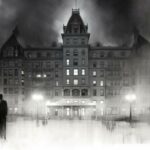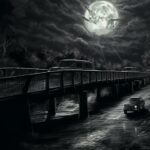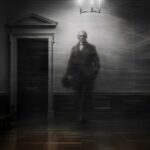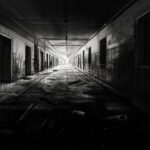Table of Contents
Columbus, Ohio, harbors a shadowy past that whispers through its storied buildings and dimly lit streets. Adventurous souls seeking a brush with the paranormal can explore Columbus’ most haunted places, where echoes of the past manifest in chilling tales and spectral sightings. These locations offer not just thrills, but a glimpse into the city’s haunting history, ensuring that the spirits of yesteryear never truly rest in peace.
If you are doing any kind of paranormal investigation here, you might want to take a look at our ghost hunting equipment list. Locations like this get a reputation because they are high activity and you don’t need much to see for yourself.
Ohio Statehouse
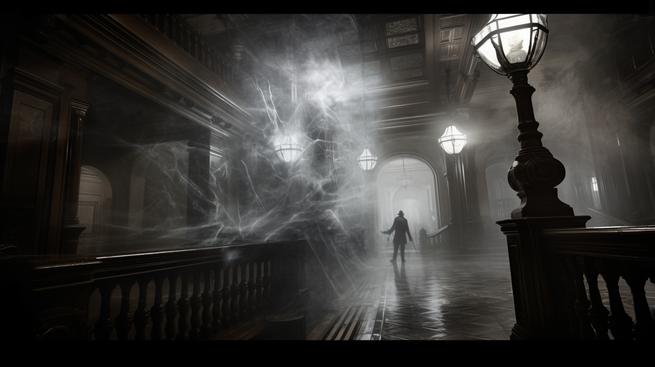
The Ohio Statehouse in Columbus holds a rich tapestry of history, with its walls echoing tales from the past that sometimes venture into the supernatural. The stately edifice, a crown jewel in the heart of the Buckeye State, has long been the hub of Ohio’s political action, but it also harbors ghostly secrets that add a different kind of life to its hallowed halls.
One of the most talked-about specters is that of Thomas Bateman, a clerk who was so dedicated to his work that not even death could stop him from his duties. It is said that his ghostly figure can still be seen, quill in hand, forever updating the eternal ledger of legislative actions.
The spirit of Tommy Drum, a Civil War soldier, is another frequent visitor, often heard marching on the spot where he once stood guard. His ethereal footsteps remind visitors that history never truly dies; it just paces the floors of the past.
Within the Statehouse, the ghost of Governor Allen Trimble supposedly roams, perhaps still musing over state affairs or lingering out of a sense of unfinished business. His apparition is a reminder of the indelible mark that leaders leave on the fabric of history.
The grand staircase within the Statehouse is its own character in these haunted tales. Witnesses claim to hear the rustling of skirts and see the fleeting image of a woman in 1860s attire, believed to be a lovelorn lady who met a tragic end. Her presence is a whisper from the antebellum era, a time when the Statehouse was a new beacon of governance.
In the dead of night, the air sometimes carries the laughter of children, playful and unseen. These mysterious echoes are attributed to the young spirits who are said to have drowned in a well during the Statehouse’s construction. They play tag with eternity, their laughter a chilling reminder of lives cut short.
The Ohio Statehouse Museum Education Center has embraced these haunted tales, bringing them to life for visitors who dare to delve into the otherworldly side of Ohio’s history. The annual Haunted Tales of the Ohio Statehouse event draws in those with a penchant for the paranormal, offering a spine-tingling glimpse into the building’s ghostly lore.
In the end, the Ohio Statehouse is not just a place of bills and bylaws; it is a keeper of stories, both seen and unseen. The echoes of its spectral residents serve as a synecdoche for the state’s rich and enigmatic past, reminding us that every corner of history has its shadows, and some shadows refuse to fade.
I heard that the Ohio Statehouse in Columbus is pretty haunted, like with the ghost of an old clerk named Thomas Bateman who keeps working even after he died, and you can sometimes catch him writing away with his quill. They say there’s also the sound of a Civil War soldier marching and a lady’s ghost on the grand staircase, plus the laughter of kids that’s kinda creepy because they say they drowned there a long time ago.
Harrison House Bed And Breakfast
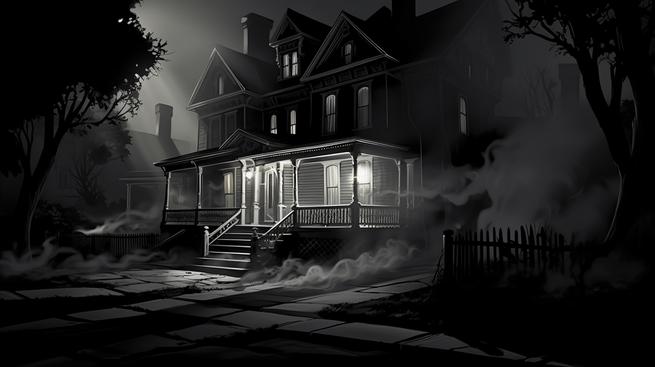
The Harrison House Bed and Breakfast in Columbus, Ohio, stands as a beacon of the supernatural, its storied past breathing life into tales of ghostly residents. Built in 1890 by Banker and architect Amos Solomon, this Victorian gem has exchanged hands and purposes but has consistently maintained its status as a haven for the otherworldly.
After Solomon’s departure in 1907, the home saw a revolving door of tenants, with many leaving for reasons lost to time. Fast forward to 1965, and the once-grand residence faced a future in tatters, until the Olentangy Management Company stepped in, restoring the house along with the neighborhood’s historic charm. The transformation seemed to stir the spirits, perhaps acting as an environmental trigger, awakening those who once called the house home.
Now a bed and breakfast, the Harrison House has earned its stripes as a hotbed of paranormal activity. Innkeeper Lynn Varney, alongside guests and their four-legged companions, have encountered the spectral inhabitants who favor the upper floors but occasionally grace the first floor with their presence. The spirits, with manners as impeccable as their Ohio roots, include a playful young boy named Moby, a man with a penchant for cigarettes named Cedric, and a strong female presence known as Nancy, who claims to have sought out Lynn herself.
Guests have reported beds showing signs of unseen visitors sitting or lying down, objects that play hide-and-seek only to turn up in the most unexpected places, and doors and windows with a life of their own. The third floor, in particular, seems to be a hotspot, with one of Lynn’s dogs outright refusing to set paw there, and guests’ pets cowering under the beds in sheer terror.
The entity of a young boy, Moby, is known for his playful antics, especially enjoying a game of surprise from the hall closet. Cedric, on the other hand, leaves a lingering scent of cigarette smoke in his wake. The quiet presence of Jakob only makes itself known when excited, then running amok on the second and third floors. Nancy, the matriarch, watches over the house, while another female spirit seems content with fleeting visits, her soft voice captured in EVPs bidding a brief “Gotta Go.”
Some speculate that a wall on the first floor serves as a portal between worlds, a revolving door for spirits in transition, with one attempt after another to hang a painting there thwarted by an unseen hand.
The Harrison House Bed and Breakfast, with its rich history and resident spirits, continues to intrigue and welcome those brave enough to cross its threshold. Personal experiences, along with evidence gathered by investigators and psychics, strongly suggest that the house is indeed a permanent address for some otherworldly inhabitants, making it a must-visit for anyone with a curiosity for the paranormal in the heart of Columbus.
I stayed at the Harrison House B&B and let me tell you, it’s like a ghost party up in there! My bed felt like someone sat down on it when no one was there, and I swear I heard a kid laughing in the closet.
Mirror Lake
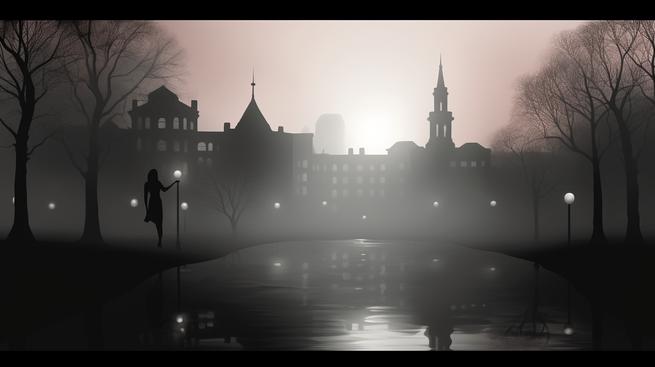
The haunted tale of Mirror Lake at Ohio State University sends shivers down the spines of students and faculty alike. Legend has it that a woman in pink, known as the “Pink Lady,” haunts the misty shores of the lake. She is said to be the grieving widow of Dr. Clark, an OSU professor who took his own life following a disastrous oil mining venture in Alaska. The professor’s suicide, which occurred at the turn of the century, left his wife embittered, especially after the university’s administration seemingly dismissed her husband’s distress.
After her death in the 1920s, sightings of her ghostly figure skating across the icy waters began to emerge. Dorrie Wells, an operations administrator at the university, attests to people witnessing the Pink Lady’s spectral presence on cold winter nights. This eerie phenomenon is not the only paranormal activity attributed to Mirror Lake; Pomerene Hall, which stands where Dr. Clark’s vegetable garden once thrived, is also a hotspot for supernatural occurrences. Staff report footsteps echoing in empty hallways and locked doors mysteriously opening.
The ghost stories of OSU do not end at Mirror Lake. Oxley Hall, once the first women’s dormitory, is reportedly haunted by the spirit of a female student who was murdered. Cathy Collins, a former fiscal officer for the Office of International Affairs, recounts unexplained footsteps and windows that would open and close by themselves. Even firefighters have experienced the unexplainable, such as lights swinging in a still room.
Hopkins Hall has its own ghostly tenant: the spirit of a female student who suffered a mental breakdown after being trapped in an elevator overnight. Despite moving on and graduating, her untimely death in an automobile accident led to rumors that her vengeful spirit occasionally disrupts the building’s elevator.
At Ohio State University, it’s not just students who linger after death. Herbert “Hubb” Atkinson, a board of trustees member, requested to be interred within the walls of Bricker Hall. To this day, his ashes rest on the second floor, marked by a plaque, and strange flickering lights are sometimes attributed to his presence.
Edward Orton, the first president of OSU, is said to continue his scholarly pursuits from beyond the grave in Orton Hall. The telltale sign of his spectral studies is a flickering light in the tower window, reminiscent of the black streaks left by his oil lamp.
These tales contribute to the rich tapestry of lore surrounding Ohio State’s historic campus, transforming it into a place where the past refuses to be forgotten. Mirror Lake and its neighboring buildings stand as sentinels to these stories, keeping the university’s haunted history alive in the hearts and minds of those who walk its grounds.
So, there’s this super creepy story about Mirror Lake at Ohio State where they say a lady in pink haunts the place because her husband, a prof, offed himself over some bad oil deal. Folks claim they’ve seen her ghost ice skating on the lake when it gets all foggy and cold.
Kelton House Museum
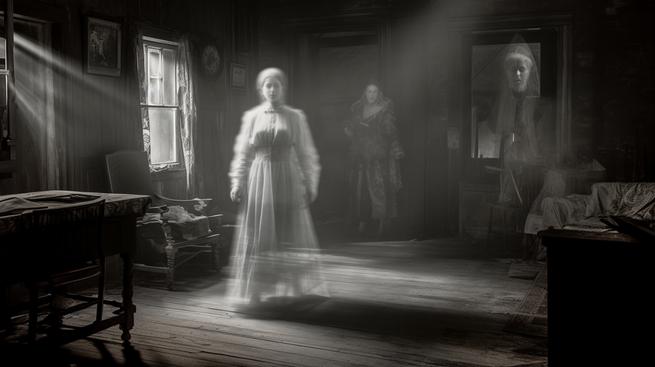
The Kelton House Museum in Columbus, Ohio, stands as a beacon of Victorian elegance, but beneath its opulent facade, it harbors a history teeming with otherworldly encounters. The stately home, which transitioned from a family mansion to a museum under the stewardship of the Junior League of Columbus, has been a hotbed of paranormal activity for nearly half a century.
From the get-go, the museum’s new caretakers sensed they weren’t alone. The installation of motion detectors and alarms, intended to safeguard the house’s treasures, instead revealed a spectral presence. Every night, as the clock struck twelve, the alarms would cry wolf, with no sign of a break-in. Interior doors, firmly shut before the museum closed, would swing open as if by an invisible hand. The police, flummoxed by the nightly occurrences, advised leaving the doors ajar, and with that, the alarms ceased their midnight toll.
The museum’s executive director, Susan Richardt, recounts tales that would make one’s skin crawl. A mysterious little girl, dressed as if for a wedding, frequents the premises during nuptial celebrations, despite no children appearing on the guest lists. This apparition, thought to be “Susie,” a neighborhood girl who continued to play with her friends even after her untimely death, sends shivers down the spine.
The museum’s history is steeped in tragedy, with the patriarch, Fernando Kelton, meeting a grisly end after a fall induced by vertigo. His demise, shortly after the death of his son Oscar in the Civil War, left a pall hanging over the house. It’s no surprise then that neighbors have reported sightings of a man in Civil War attire, believed to be Oscar himself, haunting the garden, his presence an eerie reminder of a life cut short.
Staff and visitors alike have caught glimpses of shadowy figures ascending the stairs, possibly the echoes of those who bore Fernando to his final resting place. The eldest daughter, Anna, burdened by a trifecta of loss, is said to pace the back parlor in her burgundy dress, her spirit tethered to the world of the living by a thread of eternal worry.
The museum embraces its spectral inhabitants, regarding their presence with a mix of fascination and reverence. While the Kelton House staff welcomes the sharing of ghostly tales, they draw the line at paranormal investigations, ensuring the tranquility of the spirits and the privacy of the living.
The Kelton House Museum, with its resident phantoms, stands as a testament to the past, where the line between the living and the dead blurs, allowing visitors a glimpse into a world where the departed never truly leave.
I visited the Kelton House Museum and, no joke, I felt this chill when I saw a door open all by itself! They say a little ghost girl plays there during weddings, and I totally believe it now.
Ohio Governor’s Mansion
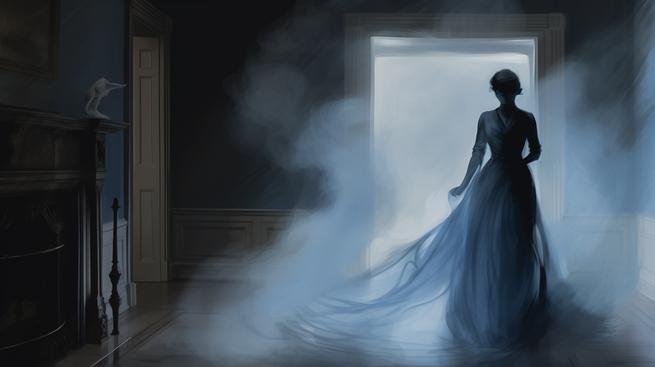
The Ohio Governor’s Mansion, also known as the Lindenburg House, stands as a testament to Columbus, Ohio’s rich and eerie past. Constructed in 1904 by the esteemed architect Frank Packard, this Neo-Georgian marvel initially served as the luxurious dwelling of Charles Lindenburg, a prominent newspaperman and entrepreneur. In 1920, the state of Ohio transformed the residence into an abode for its governors, a purpose it served diligently for 37 years.
After its tenure as a gubernatorial residence ended, the mansion hosted a variety of commercial ventures, ranging from a restaurant to a hair salon. However, the building often found itself vacant, a shell of its former glory, between these stints. The Columbus Landmarks Foundation eventually took charge, aiming to preserve its historic charm. Despite the hefty price tag tied to its maintenance, the Columbus Foundation later acquired the property, embarking on a mission to resuscitate the neighborhood by restoring the mansion.
The mansion’s haunted history whispers tales of tragedy from its storied walls. It is said that a servant met her demise within these quarters in a horrific accident, possibly due to a fire that claimed her life. Such sudden and tragic ends often leave spiritual remnants behind, and the Lindenburg House is no exception.
The mansion’s spectral resident, a maid from the turn of the century, refuses to retire from her duties. Witnesses report sightings of a black woman in a blue dress, a figure from another era, who roams the halls, her presence a blend of the diligent and the spectral. The mansion’s air occasionally carries the disturbing scent of burning hair, hinting at the grim nature of her passing.
This active spirit doesn’t shy away from making her opinions known. She has boldly removed pictures from walls, finding them disagreeable, and she even materialized to commend the renovation efforts, much to the shock of a staff member.
While the mansion has been revitalized, and its public spaces gleam with new life, the spirit appears content with the changes. However, with the demolition of the adjacent Joseph Firestone Mansion, some speculate that other spirits may seek refuge in the Lindenburg House. Only time will unlock the truth behind these walls.
The Ohio Governor’s Mansion, located at 1234 East Broad Street in Columbus, Ohio, continues to be a cornerstone of historical significance and a beacon for those intrigued by the paranormal. Whether the mansion will welcome more otherworldly inhabitants in the future remains a question that hangs in the air, as ethereal as the spirits it may house.
I heard that the old Ohio Governor’s Mansion is haunted by a maid from way back who died in a fire; folks say you can sometimes catch a whiff of burning hair and even spot her wandering the halls in her blue dress. They say she’s pretty chill with the renovations, but who knows if tearing down the house next door might stir up more ghostly roommates.
Fort Hayes

Fort Hayes in Columbus, Ohio, stands as a testament to history, its storied past casting long shadows over its present as an education center. Originally springing to life in 1861 as a Civil War armory and arsenal, the location was a beehive of activity, supplying the Union army with vital ordinance. Known initially as the Columbus Arsenal, the site was developed on a field of oak stumps under the watchful eyes of Captains J.W. Todd and T.C. Bradford, the latter often hailed as the “Father” of Fort Hayes.
The arsenal’s main facility—a robust two-story storehouse—was constructed of sandstone and brick, with timber floors strong enough to bear the burden of war. A towering shot tower was also present, where molten iron and lead took a plunge into icy waters, emerging as perfect cannonballs. After the Civil War, the arsenal donned a cloak of greenery, with trees and shrubs softening its stern military countenance.
The turn of the century saw Fort Hayes morph into the Columbus Recruiting Depot, electrified by progress and expanding its reach. New barracks, officers’ houses, and a hospital were among the fresh additions, signaling a growing importance. But the real surge of activity came with World War I and the Selective Military Conscription Act, which saw the depot swell with recruits and transform old barns into modern facilities.
World War II kept the momentum going, with thousands of officers and men stationed at Fort Hayes, and even after the war, the Ohio National Guard and the Army Reserve called it home. In a twist of fate, the Columbus City Schools acquired fifty acres of this historic land in 1976 for a mere dollar, paving the way for the Fort Hayes Metropolitan Education Center to rise.
Today, the center houses a mix of old and new, with the Fort Hayes Arts and Academic High School and the Career Center fostering excellence in students. Yet, the echoes of the past refuse to be silenced, with persistent rumors that the grounds are haunted by those who once lived and died there.
The Shot Tower stands as a chilling landmark, with students wary of ascending to the upper floors for fear of encountering the spectral residents. The old hospital building, now repurposed for classrooms, reportedly echoes with the cries of the wounded, and visions of nurses and soldiers in uniform are not uncommon.
Even the old mess hall, now a center of science learning, has its share of ghostly apparitions, with entities seen leaving with food only to vanish into thin air. These phantoms of Fort Hayes, perhaps still bound by duty or curiosity, seem to watch over the living, their otherworldly whispers barely audible yet palpable in the air.
Fort Hayes remains a hive of learning, but it’s hard to shake off the feeling that invisible eyes are watching, and that lockers swinging open and slamming shut might just be the playful antics of those who walked these grounds long before. Whether it’s the march of phantom footsteps or the sensation of being followed, the spirits of Fort Hayes appear to be well-entrenched, forever a part of the fabric of this historic place.
I swear, when I’m walking through the old Fort Hayes halls, it’s like you can hear the echoes of soldiers’ boots, and sometimes, my locker pops open like someone’s trying to tell me they’re still around.
Thurber House
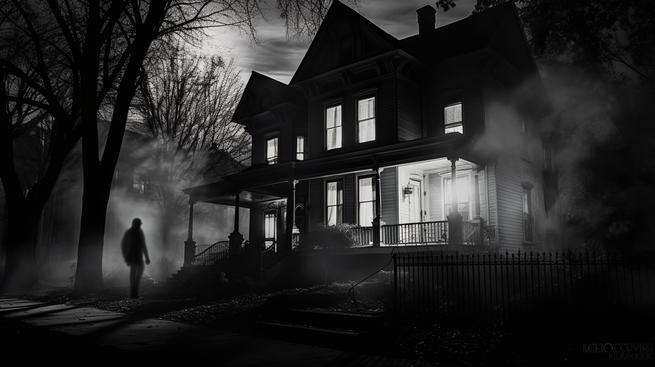
The Thurber House in Columbus, Ohio, stands as a testament to literary legacy and spectral inhabitants. Built in 1875, this Victorian abode once sheltered the Thurber family, with the middle son, James Thurber, a renowned cartoonist and author, cementing its historical significance. The house’s storied past intertwines with the supernatural, beginning with James Thurber’s own account of paranormal encounters in his story, “The Night the Ghost Got In.”
According to local lore, the house’s haunting history dates back to the 1880s when a husband, upon receiving an anonymous tip about his wife’s infidelity, returned home early. Overwhelmed by betrayal, he reportedly took his own life in one of the second-floor bedrooms. This tragic event set the stage for a lingering presence that has been felt by various residents over the years.
The ghost of the heartbroken man is said to roam the house, with his heavy, sorrowful footsteps echoing through the halls. In-house writers residing in the attic apartment have described encounters with a stooped, shadowy figure, while pets react to unseen entities in the parlor, growling at vacant spaces.
Physical manifestations are not uncommon in the Thurber House. James Thurber himself reported witnessing books slide across the room without human assistance. A photograph capturing a translucent apparition, believed to be one of the house’s ghosts, hangs on the wall, further fueling the haunted reputation.
Today, the Thurber House serves as a literary center and museum, honoring James Thurber’s contributions to literature. Despite no formal paranormal investigations, the consistent accounts of ghostly activity by guests suggest that the spirits of the past are still very much at home within its walls.
Located at 77 Jefferson Avenue, the Thurber House remains a beacon for both the curious reader and the ghost hunter, nestled in a quiet corner of Columbus, where the echoes of history and the whispers of the otherworldly continue to captivate visitors.
One night at the Thurber House, I swear I heard heavy footsteps upstairs when no one else was around, and a chill ran down my spine like someone’s sad spirit was still wandering those halls. Another time, my dog kept barking at a corner in the parlor, but there was absolutely nothing there—or at least, nothing I could see.
Green Lawn Cemetery
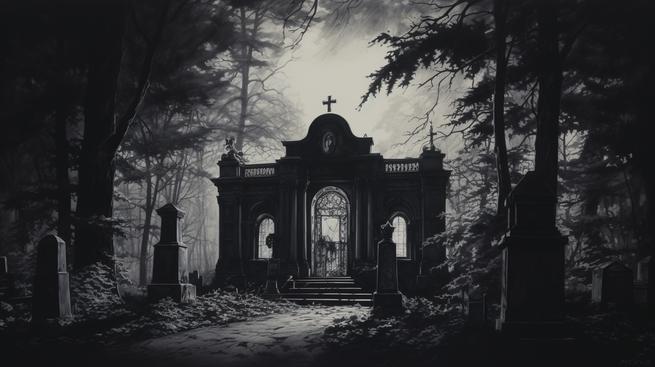
Green Lawn Cemetery, established in 1848, stands as one of Ohio’s oldest and largest guardians of the past. As the final resting place for a variety of Ohio’s most notable residents, including the illustrious author James Thurber and the intrepid World War I fighter pilot Eddie Rickenbacker, the cemetery has become a tapestry of history woven with tales both heroic and haunting. Embracing the Rural Cemetery Movement of its time, Green Lawn offers a serene natural setting, complete with a mixed oak forest that whispers the secrets of bygone days, a charming cast-iron bridge that spans the divide between the past and present, and a picturesque chapel that has borne witness to countless final farewells.
Among the cemetery’s eerie claims to fame is the Hayden mausoleum, a structure shrouded in legend. It’s said that a knock on the mausoleum’s door will be met with a response from the other side—a knock that chills to the bone, for no living soul is there to answer. This otherworldly occurrence has turned the mausoleum into a magnet for ghost hunters and the curious alike, all eager to test the veracity of the spine-tingling tale.
Within the embrace of Green Lawn’s hallowed ground, the line between the living and the dead seems to blur, giving rise to stories that cling to the shadows like morning mist. Visitors flock to the site, hoping to catch a glimpse of the cemetery’s spectral residents or to feel the electric touch of the supernatural. But whether or not one believes in the whispers of the afterlife, the rich history and somber beauty of Green Lawn Cemetery remain undisputed, making it an iconic landmark in the tapestry that is Columbus, Ohio.
I heard that if you knock on the old Hayden mausoleum door at Green Lawn Cemetery, a ghost will knock back from the inside, and man, it’s enough to give you the creeps! People say there’s nobody in there, but that knock sure makes you wonder.
Orton Hall At Osu
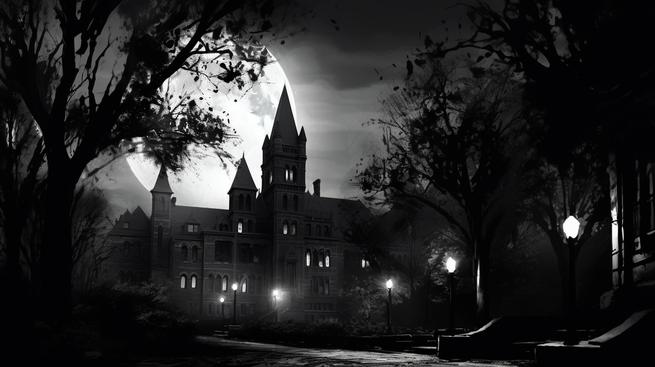
Orton Hall at Ohio State University in Columbus, Ohio, stands as a beacon of paranormal activity, its history steeped in tales that chill the bones of even the most skeptical visitors. The building, an architectural marvel and the second oldest on campus, commands attention with its Ricardian Romanesque style and the prehistoric creatures that stand guard along its roofline.
At the heart of Orton Hall’s haunted history lies the spirit of Dr. Edward Orton, Sr., the esteemed professor of geology for whom the hall bears its name. Dr. Orton’s fondness for the hall was well-known, and many claim his attachment to the building did not cease with his passing. Students and staff whisper about lights flickering in the tower, where Dr. Orton used to read by lamplight, suggesting his presence still lingers within those hallowed walls. The scorch marks on the ceiling, a testament to his late-night studies, feed the rumors that his spirit continues to haunt the building.
Adding to the eerie ambiance, a tale circulates about a Cro-Magnon ghost that roams the geology museum housed within Orton Hall. According to reports in The Lantern, two psychics felt the presence of this ancient spirit during their visit, claiming it was agitated by its displacement in time. The echoes of the past reverberate through the hall as this primeval figure reportedly slams doors and bangs on walls, expressing its timeless frustration.
Orton Hall’s ghost stories are not just whispers in the wind; they are the threads that weave the fabric of the university’s folklore. The hall, with its gargoyles and fossils, serves as a reminder of the university’s rich history and the tales that have become part of its identity. Whether fact or fiction, the haunted history of Orton Hall remains an indelible mark on the spirit of Ohio State University.
I heard from some buddies that Orton Hall at OSU is haunted by its old geology prof, Dr. Orton, who loved the place so much that his ghost still hangs out, flicking lights on and off. There’s also some super old Cro-Magnon ghost that gets all cranky and slams doors in the museum there.





